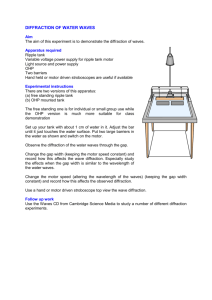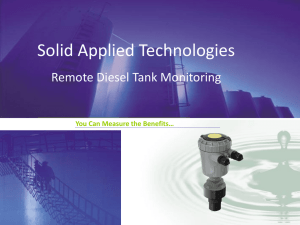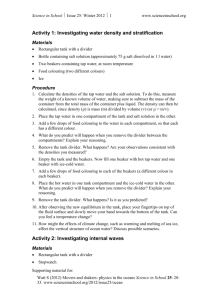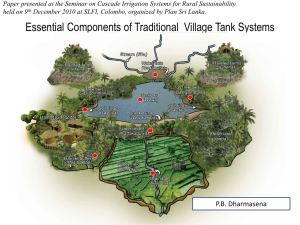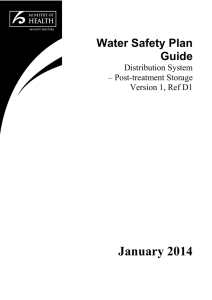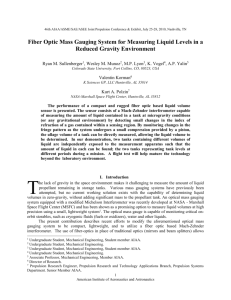Datasets
advertisement
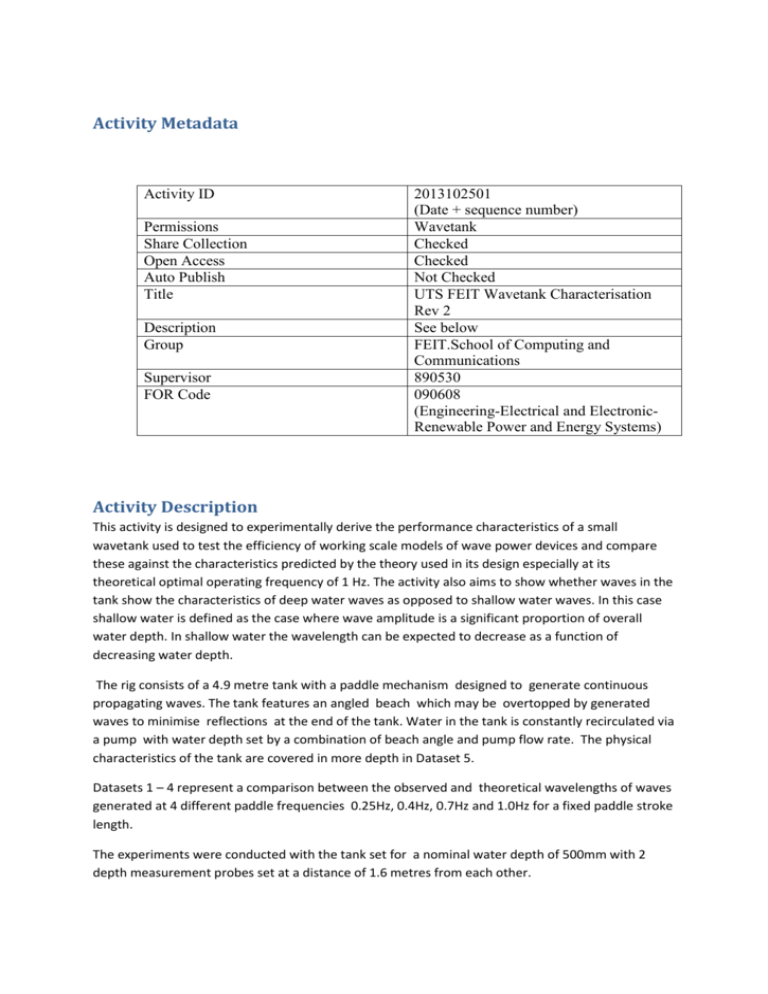
Activity Metadata Activity ID Permissions Share Collection Open Access Auto Publish Title Description Group Supervisor FOR Code 2013102501 (Date + sequence number) Wavetank Checked Checked Not Checked UTS FEIT Wavetank Characterisation Rev 2 See below FEIT.School of Computing and Communications 890530 090608 (Engineering-Electrical and ElectronicRenewable Power and Energy Systems) Activity Description This activity is designed to experimentally derive the performance characteristics of a small wavetank used to test the efficiency of working scale models of wave power devices and compare these against the characteristics predicted by the theory used in its design especially at its theoretical optimal operating frequency of 1 Hz. The activity also aims to show whether waves in the tank show the characteristics of deep water waves as opposed to shallow water waves. In this case shallow water is defined as the case where wave amplitude is a significant proportion of overall water depth. In shallow water the wavelength can be expected to decrease as a function of decreasing water depth. The rig consists of a 4.9 metre tank with a paddle mechanism designed to generate continuous propagating waves. The tank features an angled beach which may be overtopped by generated waves to minimise reflections at the end of the tank. Water in the tank is constantly recirculated via a pump with water depth set by a combination of beach angle and pump flow rate. The physical characteristics of the tank are covered in more depth in Dataset 5. Datasets 1 – 4 represent a comparison between the observed and theoretical wavelengths of waves generated at 4 different paddle frequencies 0.25Hz, 0.4Hz, 0.7Hz and 1.0Hz for a fixed paddle stroke length. The experiments were conducted with the tank set for a nominal water depth of 500mm with 2 depth measurement probes set at a distance of 1.6 metres from each other. Results suggest that the waveforms were not good quality for any of the tested frequencies but that the observed wavelength better approximates predicted wavelength as the frequency is increased with good results at 1Hz. It can be concluded that the tank should be used at a frequency of greater than 1 Hz with the caveat that available wave power decreases as frequency increases. At 1 Hz the generated waves exhibit the characteristics usually seen at intermediate depth. Datasets 1. Dataset 1 1.1. 0.25Hz-WavelengthMeasuredvsPredicted.xlsv 2. Dataset 2 2.1. 0.4Hz-WavelengthMeasuredvsPredicted.xlsv 3. Dataset 3 3.1. 0.7Hz-WavelengthMeasuredvsPredicted.xlsv 4. Dataset 4 4.1. 1.0Hz-WavelengthMeasuredvsPredicted.xlsv 5. Dataset 5 – Describes the physical characteristics of the wavetank 5.1. This document 5.2. Schematic of tank circulating system 5.3. Photograph of tank assembly 5.4. Tank Specifications



